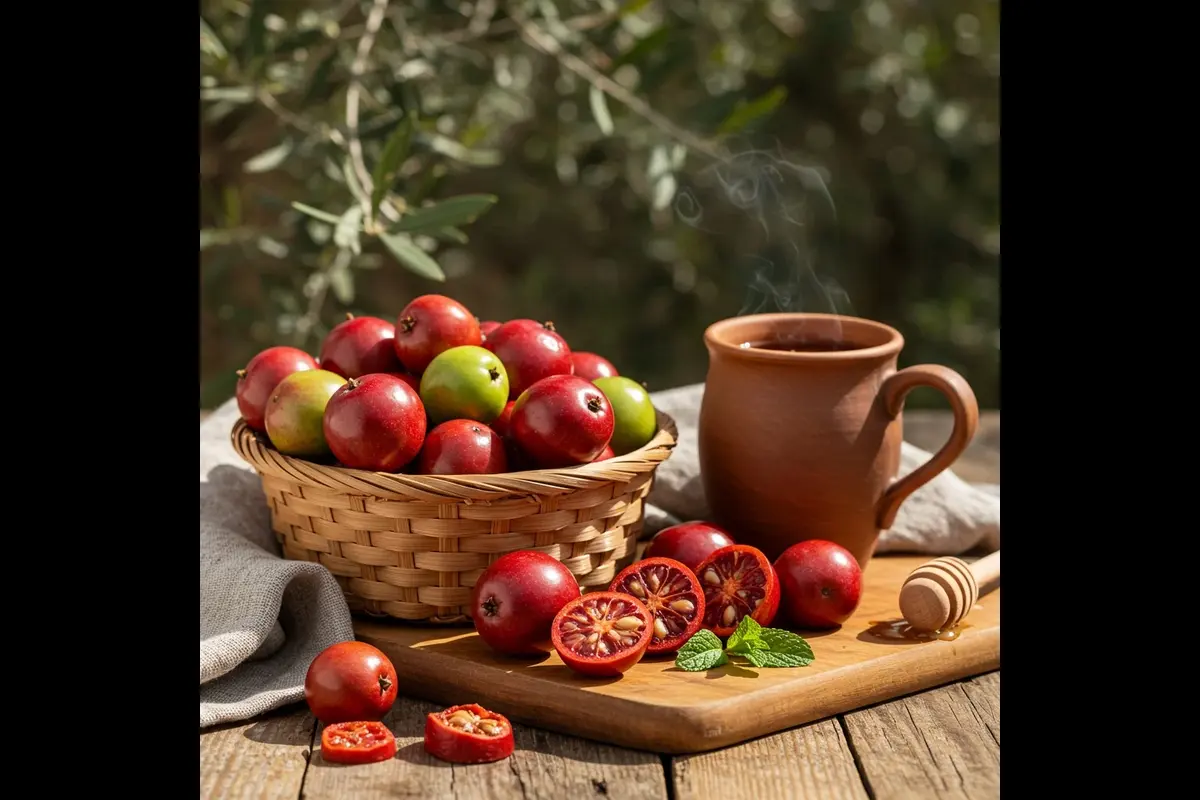What is Koriandri ?
Koriandri , scientifically known as Coriandrum sativum, is a plant world-renowned for its culinary, medicinal, and cultural significance. Depending on the regional dialect, coriander is also called cilantro or coriander. Koriandri embodies a dual identity: The leaves (Koriandri ) are prized for their lemony, spicy aroma, while the dried seeds (Koriandri ) offer a warm, nutty flavor ideal for spice blends. The herb belongs to the Apiaceae family and is also known by other cultural names such as dhania (India), kuzbara (Middle East), and coriandri in Albania. It is a versatile plant that connects cuisines, farms, and medicinal traditions across all continents.
What is Koriandri ?
- Botanical Description of Koriandri
- Origin and Distribution of Koriandri
- Culinary Uses of Coriandri Worldwide
- Coriandri Leaves
- Coriandri Seeds
- Popular Dishes
- Nutritional Value of Koriandri
- Health Benefits of Koriandri
- Genetic Factors and Flavor Perception
- Growing Coriandri at Home
- Best Storage Options
- Coriandri in Traditional Medicine
- Non-Culinary Uses of Koriandri
- Coriandri and Sustainable Agriculture
- Scientific Research and Modern Applications
- Common Myths and Misconceptions
- Side Effects and Precautions
- Coriandri in Culture and Folklore
- Simple Coriandri Recipes
- Coriandri in Urban Cuisine
- Alternative Names and Linguistic Variants
Botanical Description of Koriandri
Coriandri is a delicate herbaceous plant with soft, feathery leaves. Parsley resembles cilantro, bearing small umbels of white to pale pink flowers and spherical seeds that ripen to golden brown. As an annual herb, it completes its life cycle in a single growing season. From seed, the plant germinates within two weeks, develops into a shrub about 50–60 cm tall, and eventually flowers and produces seeds. It thrives in temperate climates and prefers well-drained soils with plenty of sunlight. Although it resembles parsley, cilantro is easily recognized by its distinctive aroma and the shape of its pods.
Origin and Worldwide Distribution of Koriandri
Coriander is over 7,000 years old, with its earliest use dating back to the Mediterranean and Southwest Asia. Archaeologists have discovered cilantro seeds in Egyptian tombs, including that of King Tutankhamun, highlighting its sacred and culinary function in ancient times. The Greeks and Romans valued it not only as a seasoning for bread and wine, but also for its medicinal purposes. With the expansion of trade routes, coriander spread eastward to India and China and westward to Europe and America. It became a staple ingredient in traditional Indian spice blends, European pastries, and Latin American sauces, reflecting its seamless integration into diverse cuisines.
Culinary Uses of Koriandri Worldwide
Koriandri Leaves (Koriandri )
Coriander leaves are known for their intense citrus notes and are frequently used as a garnish in Latin American, Indian, Thai, and Vietnamese cuisine. Fresh, they add a vibrant flavor to dishes such as guacamole, chutneys, noodle soups, and curries. The leaves are often added at the end of cooking to preserve their delicate aroma.
Koriandri Seeds
The seeds are often dry-roasted and ground to make spice blends such as garam masala, curry powder, and pickles. Their flavor intensifies when roasted, providing a rich base for stews and marinades. In European tradition, it enhances rye bread, sausage, and even liqueurs.
Popular Dishes
In India, coriander can be found in sambar, chutneys, and biryani. Mexican cuisine uses it in salsa verde and tacos, while Middle Eastern dishes such as tabbouleh and falafel are incomplete without it. Albanian specialties such as tava e dhiut and fërgesë also contain this aromatic herb.
Nutritional Value of Koriandri
Coriander is a true powerhouse. It contains important vitamins and minerals such as vitamin C, vitamin K, vitamin A, iron, magnesium, and potassium. These nutrients contribute to a stronger immune system, healthy bones, vibrant skin, and improved muscle function. Cilantro is also rich in fiber, antioxidants, and essential oils that promote digestion and reduce inflammation. At the same time, it’s low in calories, making it ideal for a healthy diet.
Health Benefits of Koriandri
Cilantro is prized for its therapeutic properties. It supports digestion by stimulating enzyme production and relieves bloating. Its anti-inflammatory and antioxidant compounds, such as quercetin and linalool, help combat oxidative stress and reduce chronic inflammation. Studies suggest it can lower blood sugar and cholesterol levels, thus supporting metabolic health. Its antimicrobial properties also promote gut health and fight harmful pathogens. Additionally, cilantro supports heart health, bone density, immune function, and skin clarity, making it an integral addition to wellness routines.
Genetic Factors and Flavor Perception
A fascinating aspect of cilantro is its polarizing flavor. While many love its fresh, lemony taste, others describe it as soapy. This is due to genetic variations in the OR6A2 gene, which makes some people more sensitive to the aldehyde compounds present in the leaves. This knowledge helps explain the herb’s different culinary preferences and cultural adaptations.
Grow Your Own Cilantro
Growing cilantro is easy and rewarding. It thrives in soft, well-drained soil and requires 4 to 6 hours of sunlight per day. Sow seeds directly into the ground or in pots after frost, about 1 cm deep. Water regularly, but not excessively. For a bountiful harvest, cut the leaves early, before the plant sprouts (seeds). If growing for seed, allow the plant to flower and dry before harvesting. Organic compost and natural pesticides promote growth and sustainability.
Best Ways to Store Koriandri
To keep the leaves fresh, wrap them in damp paper towels and store them in airtight bags in the refrigerator. Alternatively, chop them and freeze them in ice cube trays with water or oil. The seeds should be completely air-dried and stored in airtight jars, away from heat and moisture. For long-term storage, vacuum sealing ensures optimal freshness.
Koriandri in Traditional Medicine
In Ayurveda, cilantro is valued as a digestive, cooling, and detoxifying herb. It helps balance the doshas and relieve ailments such as indigestion, fever, and skin inflammation. Chinese medicine associates it with longevity and vitality, while Unani and folk remedies use it to regulate menstruation and treat kidney problems. Infusions and decoctions are common medicinal uses.
Non-Culinary Uses of Koriandri
Cilantro also has various uses outside the kitchen. Its essential oil is used in skin care to treat acne and reduce inflammation. In aromatherapy, it has a calming effect and reduces stress and anxiety. Chewing fresh leaves combats bad breath thanks to its antimicrobial properties. In home gardens, it also acts as a natural pesticide, repelling insects with its intense aroma.
Koriandri and Sustainable Agriculture
Cilantro plays an important role in sustainable agriculture. It improves soil health in crop rotations, and its flowers attract pollinators like bees. Intercropping it with legumes and leafy greens reduces pests and increases yield. Since cilantro grows even in small spaces, it is perfect for organic urban gardening.
Scientific Research and Modern Applications
Scientific studies confirm cilantro’s antioxidant, antidiabetic, and lipid-lowering properties. Studies support its use in dietary supplements for sugar and cholesterol control. Extracts and essential oils are increasingly used in cosmetics, pharmaceuticals, and functional foods. Clinical trials continue to investigate its effectiveness in neurological and inflammatory diseases.
Common Myths and Misconceptions
Many believe that cilantro and coriander are different plants; in fact, they are parts of the same plant. Some argue that it has little nutritional value, but science proves otherwise. The soapy taste is not due to poor quality, but rather to genetic factors. Another myth is that cilantro causes allergic reactions in most people, although these cases are rare.
Side Effects and Precautions
Although cilantro is generally safe, people with allergies to umbelliferae should exercise caution. Excessive consumption can cause digestive upset. Pregnant and breastfeeding women should limit consumption to culinary amounts. Due to its blood-thinning potential, people taking blood thinners should consult a physician. New herbs should always be introduced gradually into the diet.
Koriandri in Culture and Folklore
Cilantro has deep cultural roots. In many traditions, it symbolizes warmth, health, and protection. It has been used in weddings, religious rituals, and seasonal festivals. According to folklore, it is believed to ward off evil and promote prosperity. In Albania and the Mediterranean, it remains a prized staple in kitchens and gardens.
Simple Koriandri Recipes
Fresh Cilantro Chutney: Puree leaves with mint, garlic, lemon juice, and green chili.
Seasoned Cilantro Rice: Add the crushed seeds to hot oil and mix with basmati rice and vegetables.
Cilantro Chicken Curry: Use ground seeds and fresh leaves to prepare a yogurt-marinated chicken dish.
Cilantro Tea: Boil the seeds in water with fennel and ginger to aid digestion.
Cilantro Salad Dressing: Blend the chopped leaves with lime, olive oil, honey, and cumin.
Koriandri in the Urban Kitchen
Modern chefs value cilantro for its intense flavor and health benefits. Its low carbohydrate and high nutritional content complement vegetarian, vegan, and ketogenic diets. As an ideal container plant, it adapts well to urban gardens, providing fresh herbs year-round with minimal effort.
Alternative Names and Linguistic Variants
- Regional Name
- India: Dhania
- USA: Coriander (leaves), cilantro (seeds)
- Europe: Cilantro
- Middle East: Kuzbara
- Latin America: Cilantro
- Albania: Cilantro
Final Thoughts
Koriandri is more than just a culinary herb; it unites tradition and innovation, health and flavor, the local and the global. Its ability to thrive, complement diverse dishes, and provide medicinal support makes it an essential element in any kitchen. Whether grown in pots, used in spice blends, or brewed in healing infusions, cilantro nourishes both body and soul. Appreciating this ancient herb is not only a tribute to its past, but also a step toward a healthier and tastier future.










